Ask Ethan #37: The Earth’s Motion Through The Galaxy
It’s all relative, but what you might have seen probably isn’t accurate.
“There is no such thing as perpetual tranquillity of mind while we live here; because life itself is but motion, and can never be without desire, nor without fear, no more than without sense.” –Thomas Hobbes
Each week, we tackle a number of issues and topics here on Starts With A Bang, and you always have the freedom to submit your questions and suggestions for the weekly Ask Ethan column, which I consider at the week’s end. This week’s chosen question comes from Marcela Tang, who asks:
I found this video on YouTube about a theory of a helical model for our galaxy. [It] didn’t make much sense for me but I’d like to hear from you. Is it scientifically [accurate]?
First off, we might as well show you the video, by DJ Sadhu:
Now this video, qualitatively, has a few things right. It shows the following true facts:
- The planets orbit the Sun, roughly in the same plane.
- The Solar System moves through the galaxy with about a 60° angle between the galactic plane and the planetary orbital plane.
- The Sun appears to move up-and-down and in-and-out with respect to the rest of the galaxy as it revolves around the Milky Way.
And those things are true. But none of them are true the way they’re shown in the video. And that’s the important difference between qualitative and quantitative.

Qualitatively, you know that the planets move about the Sun in ellipses; that’s what we learn from Kepler’s laws, Newton’s laws, and Einstein’s laws, among others. But the picture on the left — that clearly shows the planets and elliptical orbits — is not accurate in terms of scale. It’s not accurate as far as the true shape, size, or amount of eccentricity is concerned. Even though they look far less like ellipses (and far more like circles), the diagram on the right, above, is what the planetary orbits look like quantitatively.
Let’s take another example that you may be familiar with (and that I brought up recently here): the orbit of the Moon.
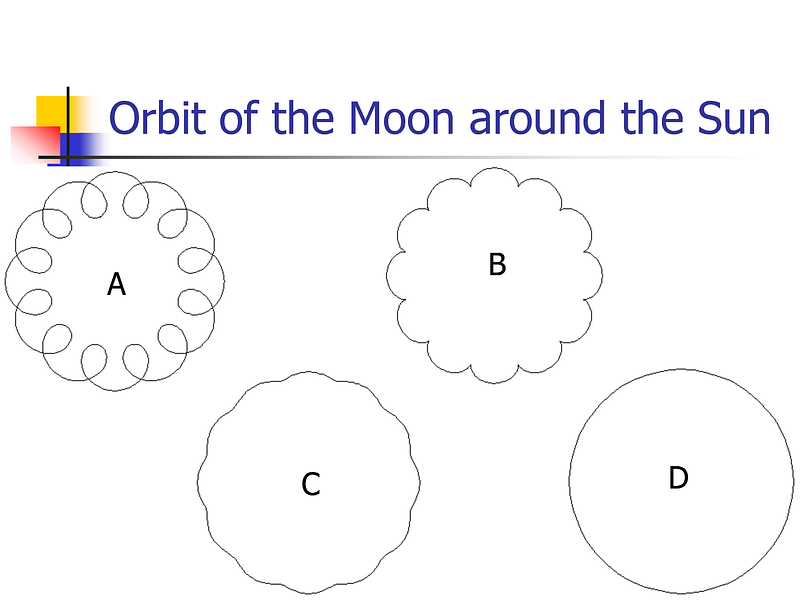
You know that the Moon revolves around the Earth with a period of just under a month, while the Earth revolves around the Sun with a period of twelve months. So which one of the above images best represents the motion of the Moon around the Sun? If you consider the distances between the Sun and Earth and those between the Earth and Moon accurately, as well as the speeds that the Moon orbits the Earth and the Moon/Earth system orbits the Sun, option D is by far the most accurate. We may choose to exaggerate them to better highlight certain effects, but A, B, and C are all quantitatively incorrect, and possibly disingenuous depending on the claims being made.
So now we come to the motion of the Solar System through the galaxy.
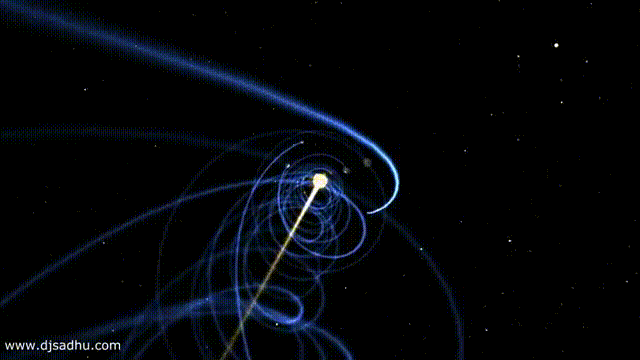
Consider how dishonest so many features of this image are. First off, the planets, at any given point in time, all are actually in the same plane. There is no lag at all, with outer planets farther “behind” the Sun than the inner ones in any sense.
Second off, consider the actual speeds at play here. Mercury — the innermost planet — is the fastest-moving one in our Solar System, orbiting the Sun with a mean speed of 47 km/s. That’s pretty fast; it’s about 60% faster than Earth’s orbital speed around the Sun, nearly four times as fast as Jupiter and some nine times as fast as Neptune, which orbits at a paltry 5.4 km/s. Meanwhile, the Sun moves through the galaxy at a speed of 220 km/s.
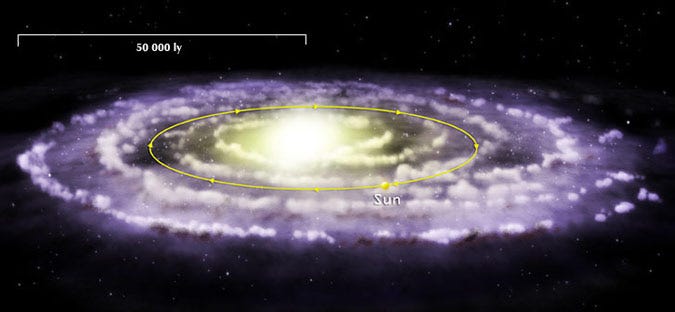
In the time it takes Mercury to make just one revolution around the Sun, the entire Solar System has moved an incredible 1.7 billion kilometers through space, in its relentless orbit around the galaxy. Keep that in mind for scale; the entire Solar System — including the Sun and every one of the planets — moves 1.7 billion kilometers along an ellipse in the plane of our galaxy every time the planet Mercury, the fastest planet in the Solar System, makes one orbit. And at that, Mercury’s orbit has a radius of only 58 million kilometers, or just 3.4% of the amount that it — and all the planets — moves along with the Sun.
If we scale out the motion of the Solar System around the galaxy, and look at how the planets move to scale, this is what we’d see.
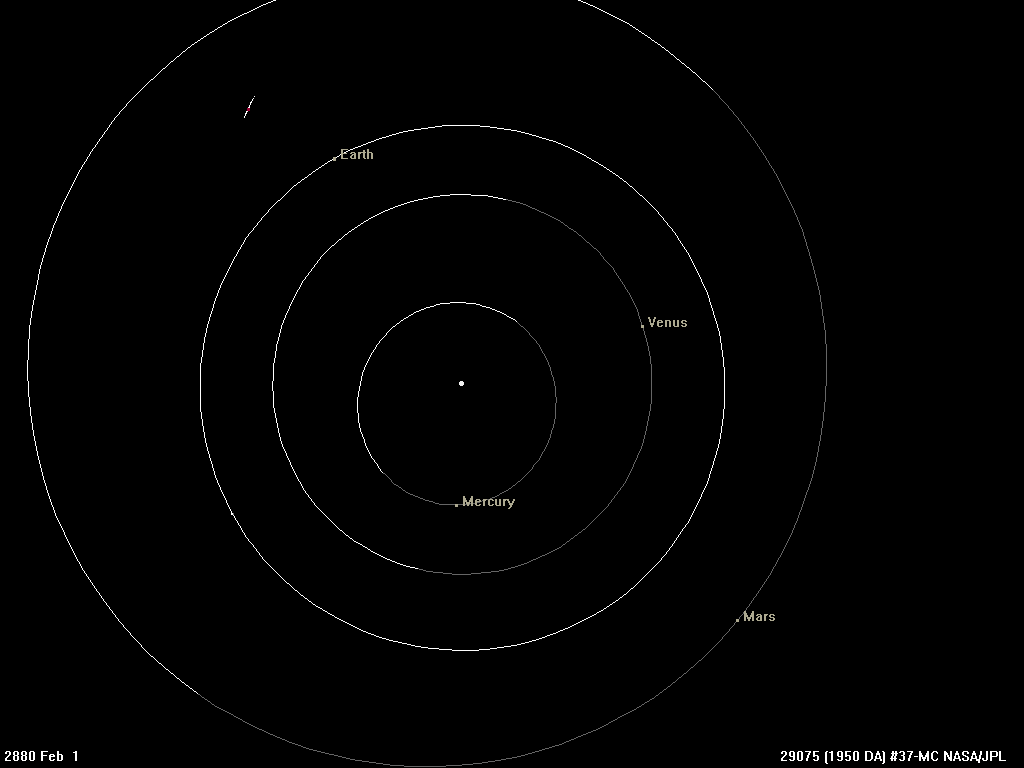
So imagine this whole system — the Sun, all the planets, the asteroids and comets, too — moving at very large speeds at an angle of about 60° with respect to the plane of our Solar System. That would be an accurate representation of our motion. More like this:
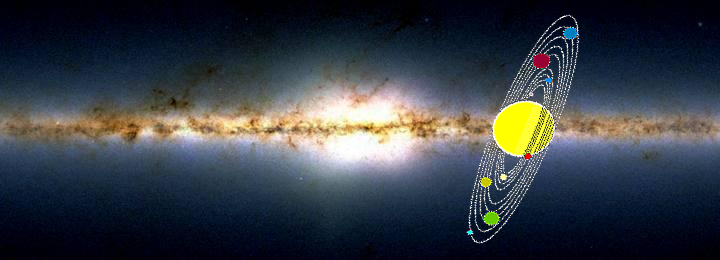
Combine all that together, and you get this much more accurate picture, courtesy of Rhys Taylor.
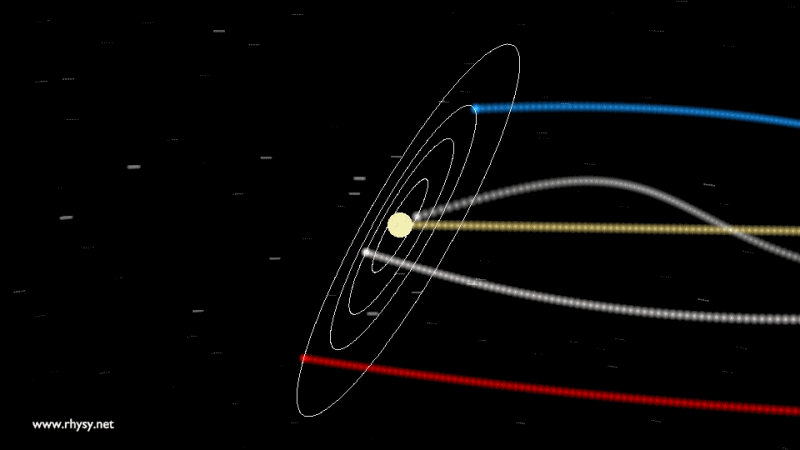
But what about our precession? And what also of the up-and-down, and in-and-out motion of our Solar System through the galaxy? Well, that’s all real, but what’s shown in the video is once again both a gross exaggeration and a gross misrepresentation of what’s really going on.
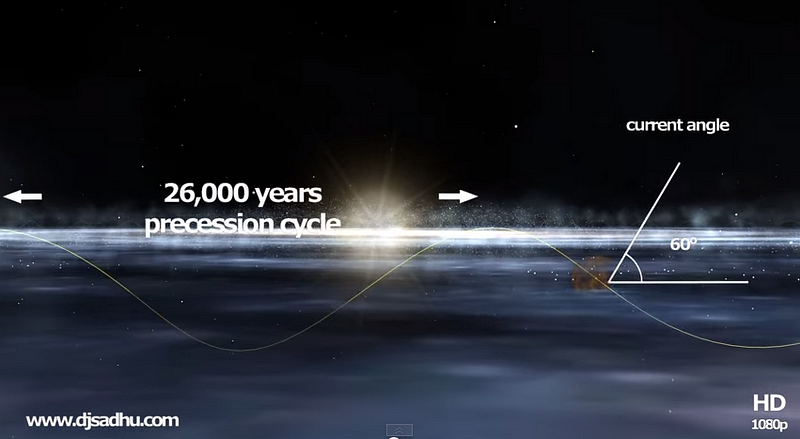
It’s true that our Solar System precesses once every 26,000 years. But there isn’t any helical motion that occurs because of it; not for our Sun, not for any of the planets. What’s actually precessing isn’t the orbits of anything in the Solar System, but the Earth’s axis of rotation!
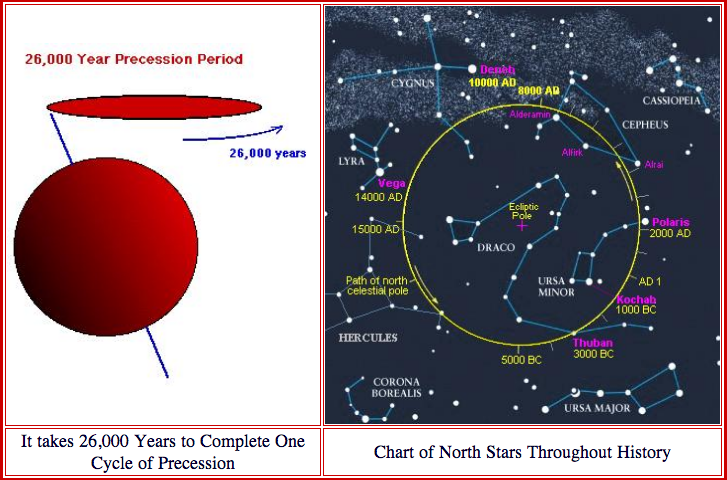
Instead of Polaris — the North Star — being located directly above the North Pole of the Earth at all times, we usually don’t have a prominent pole star! 3,000 years ago, Kocab was closer to the pole than Polaris was; in about 5,500 years, Alderamin will be our pole star; and in 12,000 years, Vega, the second brightest star in the Northern Celestial Hemisphere, will be just 2 degrees away from the pole! But that’s what changes on timescales of 26,000 years, not the motion of the Sun or the planets in the Solar System.
Also, the stellar wind?
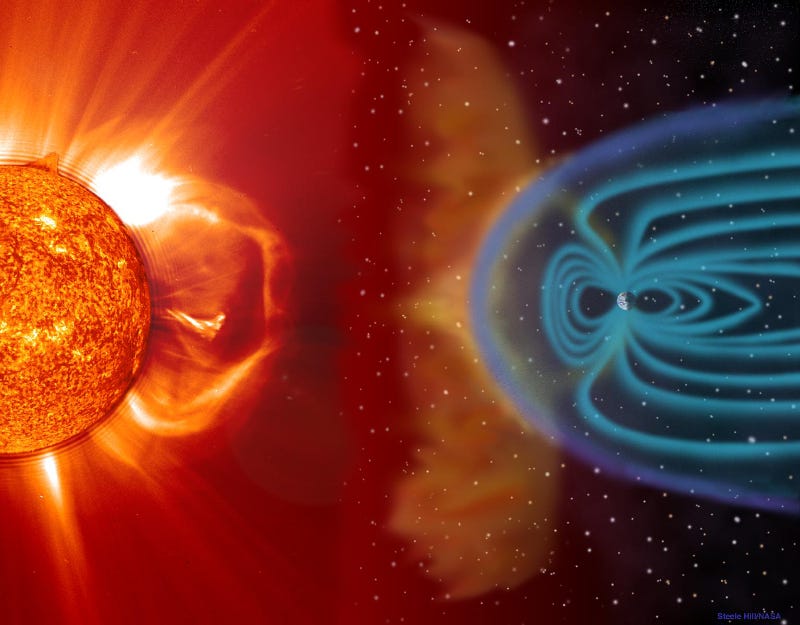
That’s something that emanates from the Sun (and all stars), not something that we run into as we move through the galaxy. Stars are very hot, and tend to emit fast-moving, charged particles from them spherically outwards. Our Sun is no exception to this, and part of the “edge of the Solar System” is where the stellar wind no longer becomes significant enough to push back the interstellar medium; that’s what the heliopause is.
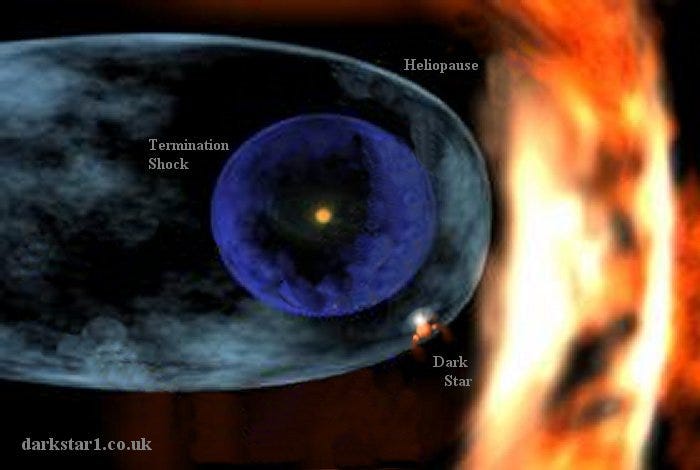
And finally, what about moving in-and-out, or up-and-down with respect to the galaxy?
As it turns out, the Sun (and the Solar System) simply obey the laws of gravity; that’s what dominates their motion. The Sun is presently located about 25-to-27,000 light years from the galactic center, and makes the shape of a simple ellipse around the galaxy. But here’s the fun thing: all the stars, gas and dust in the galaxy make ellipses as well, and the Sun doesn’t make the same ellipse as everything else.
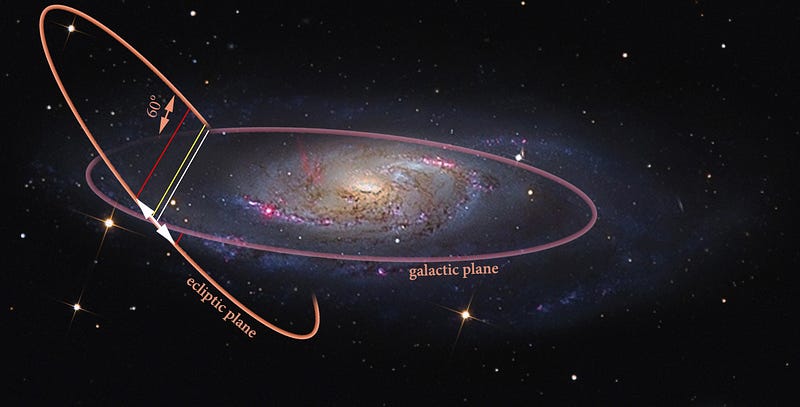
Over the timespan of about 220 million years, the Sun makes a complete orbit around the galaxy, passing slightly above and below the center of the galactic plane as it does so. But because everything in the galaxy is doing that, the orientation of the galactic plane shifts over time, too; we might be moving in an ellipse, but the galaxy is also like a spinning pie plate, and so we wind up moving up-and-down through the galaxy with a period of just 63 million years, even though we move in-and-out with a period of 220 million years.
But there’s no corkscrew motion, the motion of the planets is greatly exaggerated to the point of incorrectness, he’s outright wrong with what he illustrates about precession and the stellar wind, and the text he’s written (I refuse to link it) is completely erroneous. The simulation is very pretty, but it’d be a lot prettier if it were right. And that’s quantitatively what we should be concerned with when it comes to the motion of our Sun and planets through the galaxy. Read more about this from Phil Plait and at Universe Today, and send in your questions and suggestions for the next Ask Ethan; the next question could be yours!
Enjoyed this? Leave a comment at the Starts With A Bang forum on Scienceblogs!





